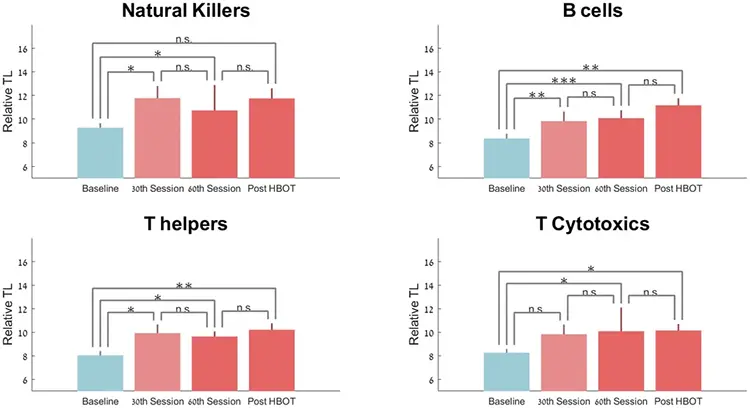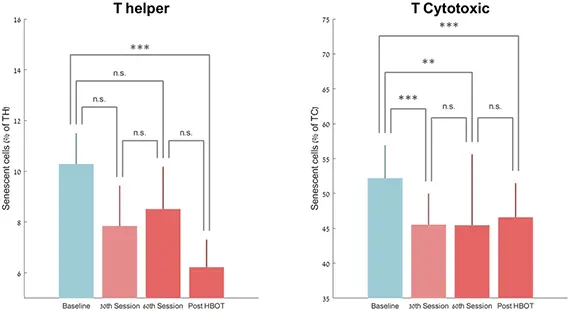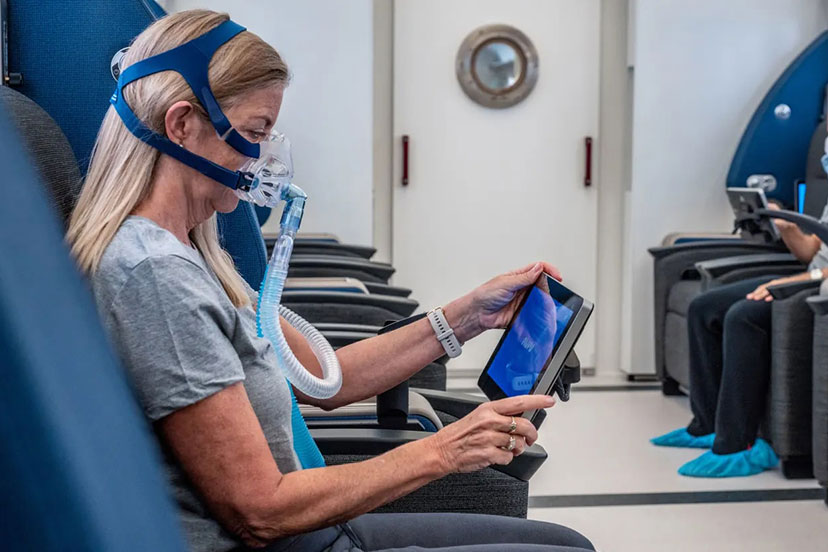Hyperbaric oxygen therapy increases telomere length and decreases immunosenescence in isolated blood cells: a prospective trial

| Israel’s Shamir Medical Center Publishes Paper in Joural Aging Introduction: Aging is characterized by the progressive loss of physiological capacity. At the cellular level, two key hallmarks of the aging process include telomere length (TL) shortening and cellular senescence. Repeated intermittent hyperoxic exposures, using certain hyperbaric oxygen therapy (HBOT) protocols, can induce regenerative effects which normally occur during hypoxia. |

Figure 1. Telomere length changes with HBOT. Mean+SEM *p<0.05, **p<0.01, ***p<0.001.

Figure 2. Senescent cell changes with HBOT. Mean+SEM *p<0.05, **p<0.01, ***p<0.001.
Results: Telomeres length of T helper, T cytotoxic, natural killer and B cells increased significantly by over 20% following HBOT. The most significant change was noticed in B cells which increased at the 30th session, 60th session and post HBOT by 25.68%±40.42 (p=0.007), 29.39%±23.39 (p=0.0001) and 37.63%±52.73 (p=0.007), respectively.
There was a significant decrease in the number of senescent T helpers by -37.30%±33.04 post-HBOT (P<0.0001). T-cytotoxic senescent cell percentages decreased significantly by -10.96%±12.59 (p=0.0004) post-HBOT.
In conclusion, the study indicates that HBOT may induce significant senolytic effects including significantly increasing telomere length and clearance of senescent cells in the aging populations.

